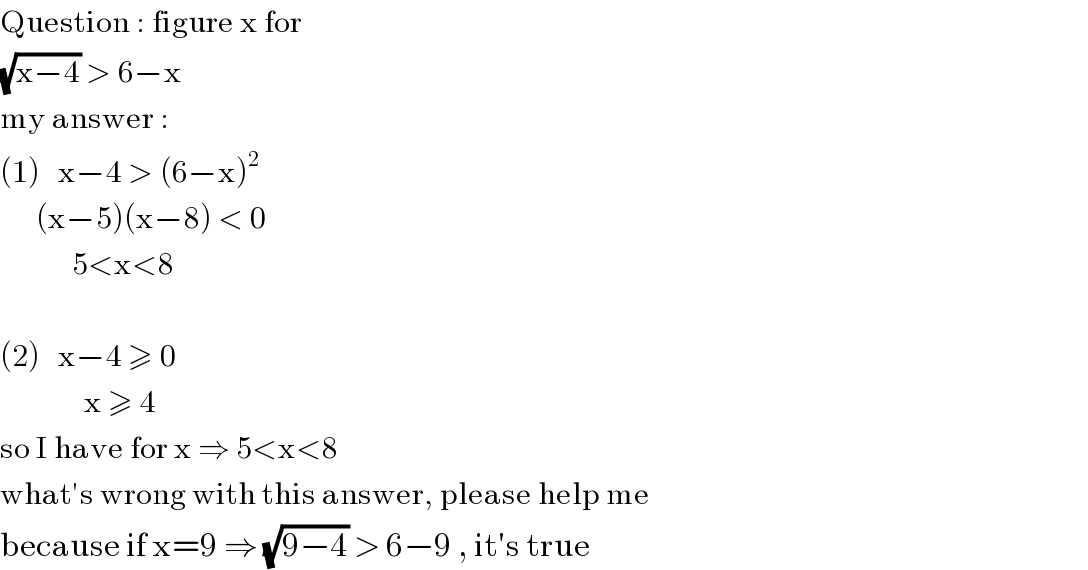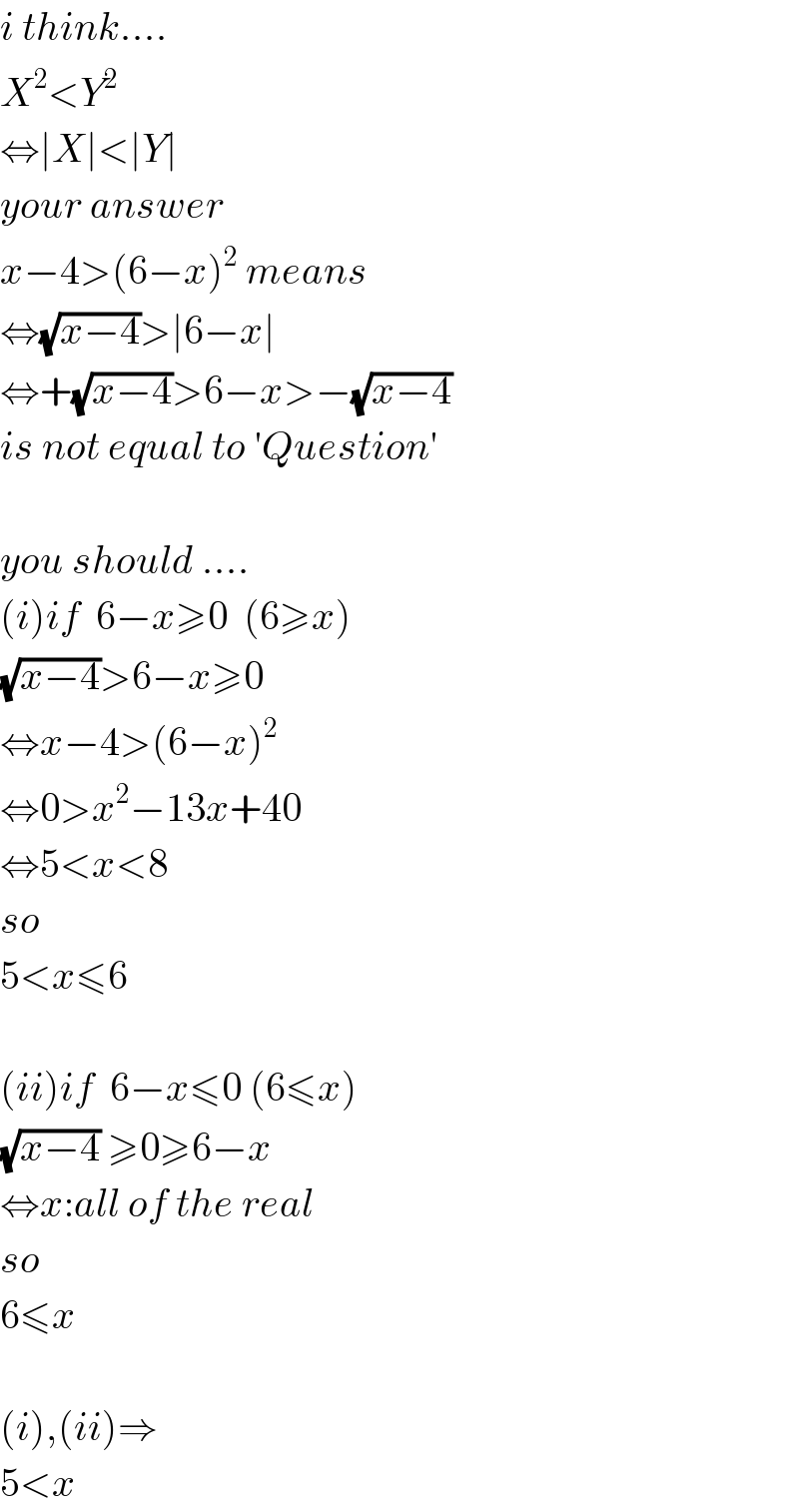
Question and Answers Forum
Question Number 8234 by sandy_suhendra last updated on 03/Oct/16

Commented byRasheed Soomro last updated on 03/Oct/16

Commented byYozzias last updated on 03/Oct/16

Commented bysou1618 last updated on 04/Oct/16

Commented bysandy_suhendra last updated on 04/Oct/16

